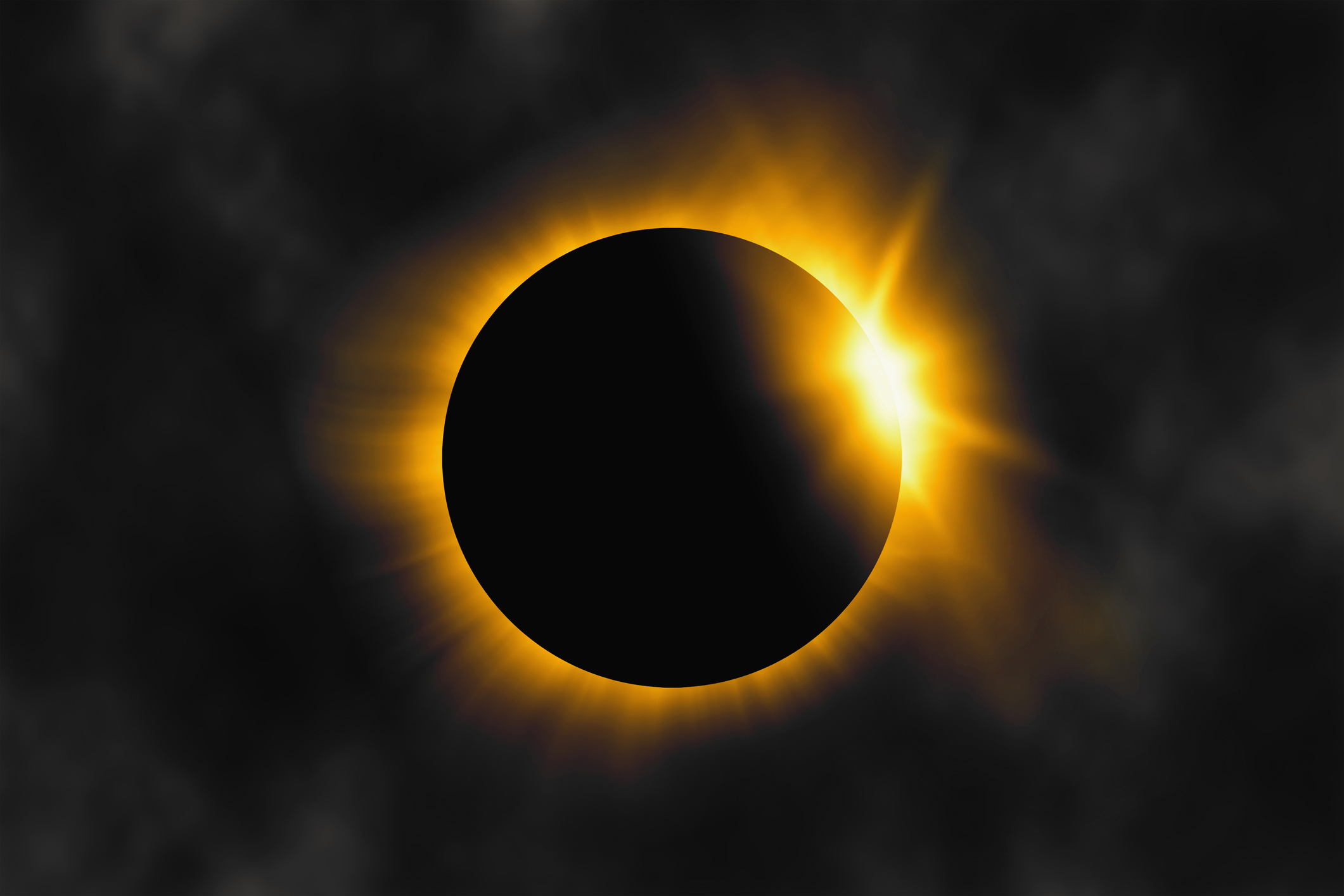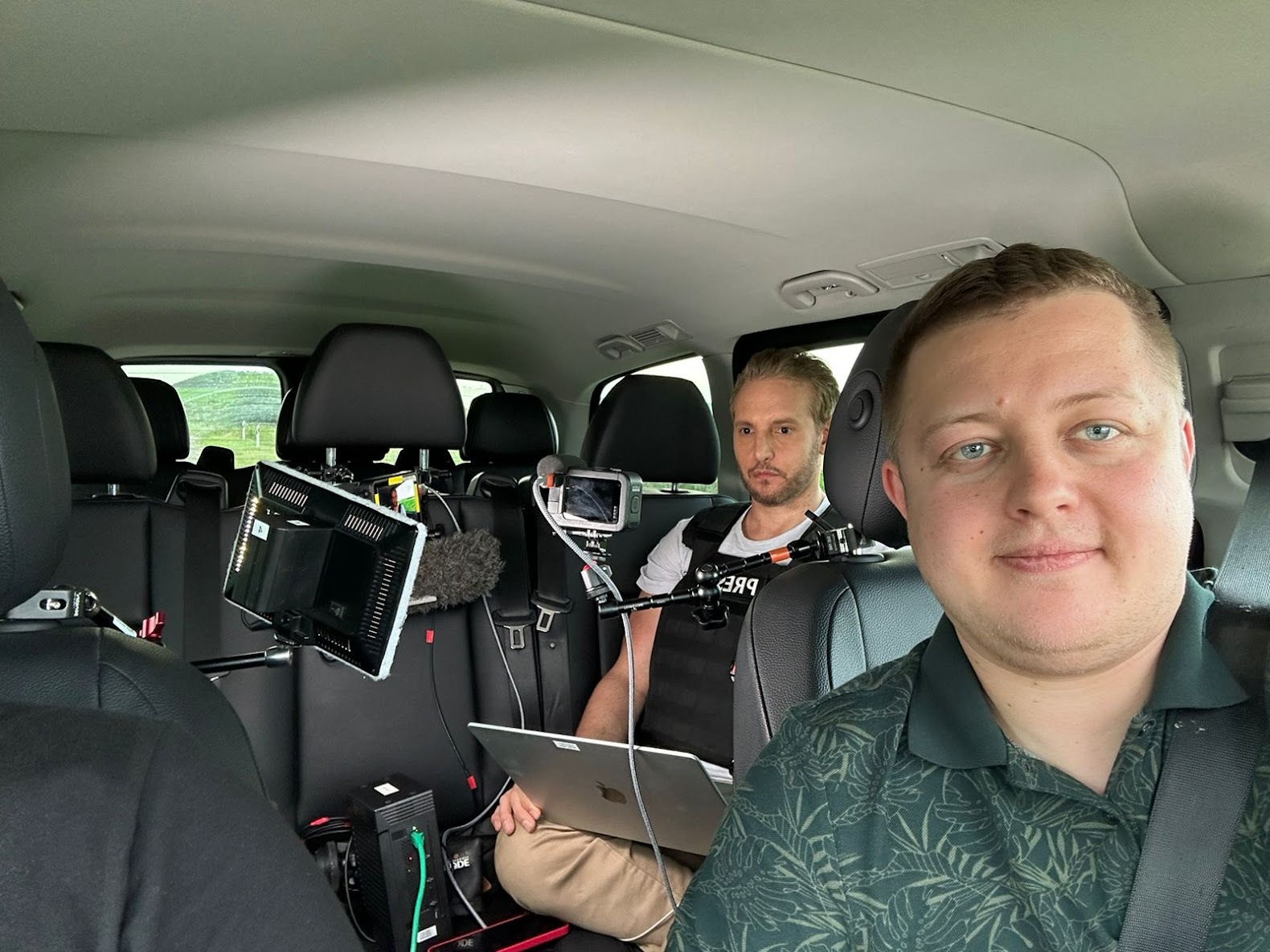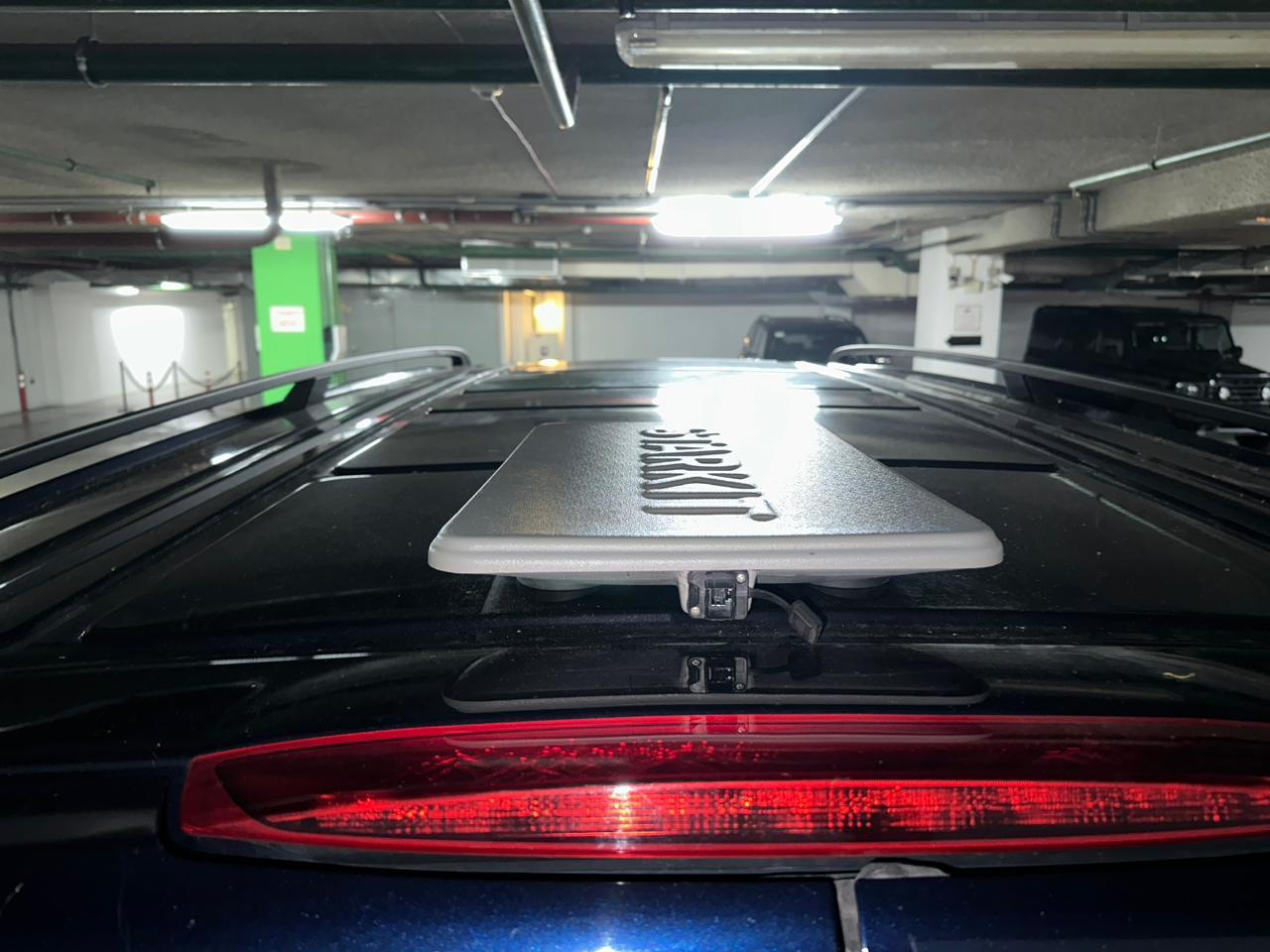Local Television Prepares For Total Solar Eclipse Coverage
An expected crush of cell traffic may strain wireless networks, but stations are prepared

WASHINGTON, D.C.—Reruns are nothing new to television, but not so much when Mother Nature typically waits a few hundred years to put on a repeat performance.
Next week’s total solar eclipse, however, is a notable exception. Many of the reporters, news photogs and newsroom personnel covering the Great American Eclipse in August 2017 are still alive and likely working the April 8 redux.
Not only will these broadcasters have the benefit of experience from the 2017 solar eclipse, but also those assigned to cover what Scientific American has dubbed “The Great American Total Solar Eclipse of 2024” will have a few tech, organizational and distribution improvements to enhance their coverage and reach viewers.
“If it exists, we will be using it,” says Lane Michaelsen, group news director at Sinclair Broadcast Group, which has 18 local TV stations in the eclipse path.
“It starts with the simplest [technology], the iPhone with a special lens and the LiveU app,” he says, and ascends up the live television technology ladder to traditional ENG cameras, microwave trucks and SNG vehicles. “Like I said, if it exists, we’re using it.”
Eclipse Basics
Next week’s total eclipse will cross the U.S. border around 12:30 p.m. CDT along the southwest edge of Texas, enveloping Eagle Pass. It will travel in a northeasterly direction across Texas, Oklahoma, Arkansas, Missouri, Illinois, Indiana, Ohio, Pennsylvania, New York, Vermont, New Hampshire and Maine. By about 4:35 p.m. Atlantic Daylight Time, it will exit the upper reaches of northeastern Maine, passing into Canada.
While it’s only been seven years since the last total eclipse swept across the nation—that time from the Pacific Coast of Oregon traveling southeast and ultimately crossing into the Atlantic Ocean at South Carolina—it’s a rare occurrence. As Bob Berman, astronomer editor for “The Old Farmer’s Almanac” noted in a recent online article: “For any given place on Earth, a total eclipse of the Sun appears just once every 375 years [on average].”
Get the TV Tech Newsletter
The professional video industry's #1 source for news, trends and product and tech information. Sign up below.
For example, the last time a total eclipse blanketed what is now Dallas, one of the major U.S. cities in the path of next week’s eclipse, predates the first TV broadcast of a drama in 1928 by 307 years.
The relatively short interval since the last total eclipse to cross the U.S. has given broadcasters and the public a recent taste of what to expect this time around, and it appears people’s appetite for all-things eclipse is enormous—whether that’s in person at outdoor venues like Niagara Falls or the Indianapolis Motor Speedway, which is selling tickets for $20, or watching on a television or digital platform.
Gray Television, for instance, will stream continuous live coverage of the total eclipse on more than 500 group station websites, connected TV and mobile apps as well as via its Local News Live (LNL) streaming news network, says Lisa Allen, vice president and general manager of the Gray Television Washington News Bureau.
The level of interest in the eclipse among the public is so large local and state governments are taking steps as well. Multiple Texas counties have issued disaster declarations for the day. Gov. Eric Holcomb of Indiana has declared a statewide disaster. Ohio Gov. Mike DeWine has signed an executive order instructing state agencies to make preparations to assist residents and visitors traveling to the state for the event.
Prompting these actions is concern over the sheer number of people who will be visiting these and other locations and the strain they will place on public infrastructure. For example, Indianapolis may see an influx of more than 100,000 people. Ohio is preparing for between 125,000 and 500,000 people visiting to witness the eclipse.
The crush and contribution
Not only does the crush of eclipse gazers raise the prospect of clogged thoroughfares, resource shortages and safety concerns, it also runs the risk of swamping cellular networks in some areas, which raises concerns for broadcasters relying on IP-newsgathering to contribute footage from the field.
“I told our 18 stations [in the path of the eclipse] to make sure those live trucks and satellite trucks start and work because with LiveU we rarely use them [the vehicles],” says Sinclair’s Michaelsen. “But if you are looking at Dayton, Ohio, where they’re talking about shutting down the Interstates and an invasion into the smallest towns, LiveU might not work [on overcrowded wireless networks].”
At some locations along the path of the eclipse, Sinclair has contracted with phone providers for fiber optic drops as an alternative to wireless networks for contribution from its LiveU transmitters, he adds.
The broadcasters interviewed for this article agreed that although 5G wireless networks will play an important role, it is unclear whether they will stand up to the massive cell traffic expected at well-attended venues and deliver the bandwidth required to contribute their shots.
Gray Television, which has at least 23 stations in the eclipse path, also is warning its local newsrooms about the possibility that wireless networks could be overwhelmed. “IP transmitters will be the primary contribution technology,” says James Finch, Gray Television vice president of news services, adding that in some locations satellite transmission will provide redundancy.
That will be particularly important in two locations where the station group has no stations but is sending crews. “Outside the Gray footprint, there are a couple of places that we’ll be going,” says Finch. “We’re planning to be in Indianapolis, and we plan to be at Niagara Falls because we know that there are some big events in those locations.”
E.W. Scripps Company stations will use land connections to ensure contribution from its TVU Networks backpack IP transmitters succeed from heavily attended eclipse-viewing locations when possible, says Matt Simon, deputy managing editor at Scripps.

“They’re talking about up to 1 million people traveling to Texas for the eclipse, and 100,000 going to Fredericksburg [Texas],” he says. “We are looking at a bar-brewery there that has a viewing party and would allow us to [have] hardline transmission so we are not relying on cell cards.”
The broadcaster also will turn to Starlink satellite connectivity for its TVU Networks IP transmitters to bypass potentially swamped wireless networks. “Starlink wasn’t a thing in 2017 during the last total eclipse. Now it is,” says Simon.
Over the past year, Scripps has deployed Starlink transmitters across the station group and successfully used them to contribute reports from Ukraine. “It’s proven reliable, even when in motion from a vehicle,” Simon says.

News-Press & Gazette has two stations in the path of the eclipse, KVIA in El Paso, Texas, and KMIZ in Columbia, Mo., says Michael Fabac, NPG vice president of content and station promotion.
“Five NPG markets were in the path of totality in 2017, so our coverage plans were much more extensive then,” says Fabac.
“In 2017, we incorporated ENG live trucks in addition to LiveU backpacks, but [we] will be entirely dependent on the wireless technology this time around.”
Coverage, control and distribution
As two of the largest station groups in the country, it should be no surprise that Sinclair and Gray Television have multiple stations along the path of the eclipse, starting in Texas and concluding in Maine.
Both also plan to leverage their extensive digital presence in addition to their on-air channels to deliver in-depth coverage of the eclipse.
“One of the things mentioned to us from 2017 is the audience found it difficult to find somebody who was just tracking the actual eclipse without people talking over it or without other live shots,” says Michaelsen.
“This time we’re using technology that should allow us, depending on cloud cover, to track just the eclipse—so no voiceovers, no context and perspective. Just here it is.” Sinclair will live stream that coverage on the websites of its more than 190 stations around the country, not just its news-producing stations, and on YouTube.
The station group will provide a second feed, produced out of Sinclair’s WJLA in Washington, D.C., via The National Weather Desk platform. Many of the group’s 200 meteorologists will participate in the coverage from different sites around the country.
For instance, a group from San Antonio, Texas, will be with NASA scientists at “a yet-to-be-named” location where powerful telescopes will be used to capture the eclipse, and another will be outside Dayton, Ohio, joining the tens of thousands of people expected on hand to get their reaction, he says.
Two Sinclair meteorologists will anchor the feed and interview in-studio guests and live field guests. “The idea is that we’ll always have the eclipse on the screen, but then we’ll be adding context and perspective and show how it’s affecting people across the country,” says Michaelsen.
Gray Television will operate from two control rooms—one responsible for the two-and-half-hour fully produced Local News Live special on the eclipse and the other to produce a distributed feed of raw footage from cameras of stations from around the group, says David Donaldson, broadcast operations at the Gray Television Washington News Bureau.
“This feed is for use as live pictures, bump-ins and outs for use in a newscast,” he says. “We will be building this guaranteed feed with cameras curated from stations within the Gray footprint, including field cameras with shots of the eclipse as well as fixed skycams pointed at the sun during the event,” says Donaldson.
Building the feed at the station’s Washington, D.C., bureau relieves local Gray Television stations from the burden of “determining where to get a beauty shot,” he says.
Perhaps the biggest difference in technology between the 2017 and this year’s eclipse for Gray is the existence of its Local News Live streaming news network. “For the first time, Gray is able to showcase local markets and their eclipse coverage on one platform,” says Gray Television’s Allen.
“We are giving our local Gray journalists a national platform to share their unique and memorable coverage from their local communities,” she says. “LNL's greatest and most powerful asset is our local journalists who best report the news from the heart of their communities, and we (LNL) take it to the eyes of the country. This is an example of how we can unite our newsrooms and audiences during an unforgettable event.”
For those in their early careers in the newsrooms and the field reporting on the eclipse, one can only wonder what lessons they will take away from covering The Great American Total Solar Eclipse of 2024 that will help them the next time a total solar eclipse traverses the country—20 years from now on Aug. 22, 2044.
(Editor’s note: NBCUniversal Local has announced that it will present comprehensive coverage of the upcoming total solar eclipse on its NBC and Telemundo streaming news channels on April 8, beginning at 12 p.m. ET / 9 a.m. PT. Fox Weather has laid out some of its tech plans here. Hearst Television, Nexstar Media Group and CNN were contacted for interviews. They either declined or did not respond.)
Phil Kurz is a contributing editor to TV Tech. He has written about TV and video technology for more than 30 years and served as editor of three leading industry magazines. He earned a Bachelor of Journalism and a Master’s Degree in Journalism from the University of Missouri-Columbia School of Journalism.

